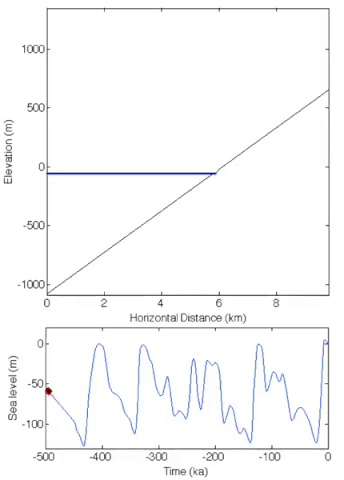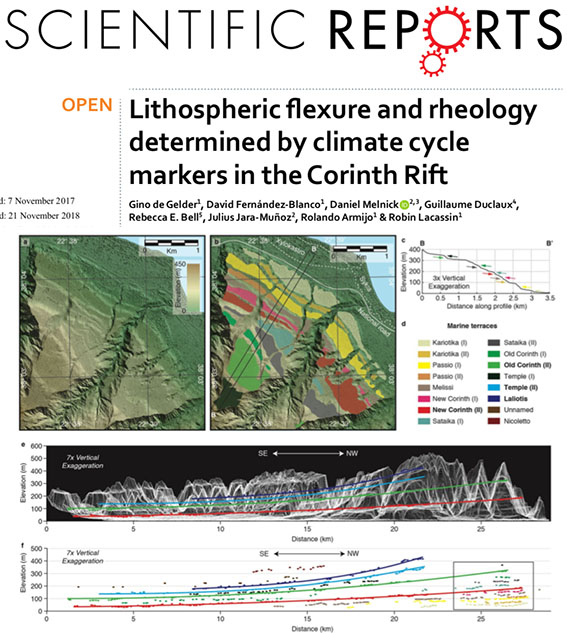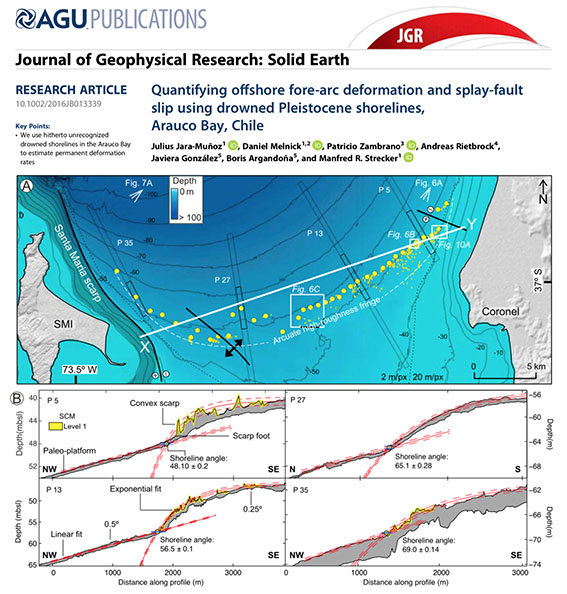Saturday 27 July 2019 kl. 19:28
The TerraceM LEM has been adapted from the wave erosion and energy dissipation model initially formulated by Sunamura (1992) and further developed by Anderson et al., (1999). The model simulates the development of wave-cut terraces formed under oscillating sea level conditions and variable or constant uplift rates. The erosive power of wave abrasion is responsible to drive cliff retreat, while uplift is responsible to preserve the terraces. Try it by downloading the new version of TerraceM in the DOWNLOADS section.
Thursday 25 July 2019 kl. 07:44
Deformed marine terraces help to constrain the mechanical behaviour of continental rift systems as well as the related seismic hazards. The unique record of onshore and offshore markers of Pleistocene ~100-ka climate cycles in the Corinth Rift (Greece), provides an outstanding possibility to constrain rift mechanics over a range of timescales. Here we use numerical models, high-resolution topography, and TerraceM to analyse the 3D geometry of a sequence of Pleistocene emerged marine terraces associated with flexural rift-flank uplift.
Thursday 25 July 2019 kl. 07:32
We studied the El Yolki fault (EYOF), a transtensional structure midways the Maule rupture not triggered in 2010. We mapped a Holocene coastal plain using light detection and ranging, which did not reveal surface ruptures. However, after mapping marine terraces with TerraceM we determined 10 m of vertical displacement. These deformed markers imply ~2‐mm/year throw rate, and dislocation models a slip rate of 5.6 mm/year for the EYOF. This works higlight the importance of accurate TerraceM assements of Holocene marine terraces to estimate fault slip rates and recurrence time.
Thursday 25 July 2019 kl. 07:11
Submarine or drowned marine terraces may provide crucial information about deformation rates in areas that usually lack of surface deformation rate estimates. Here we present a recent study of drowned marine terraces in the Arauco Bay and the nearby Santa Maria island, an area that includes the Santa Maria fault system, a structure characterized by surface ruptures and associated coastal uplift during the 2010 Maule earthaquake (Mw 8.8). In this work we used the depth patterns of marine terraces and elastic dislocation models to estimate the slip rate of the Santa Maria Fault and their earthquake recurrence at glacial cycle time-scales.




